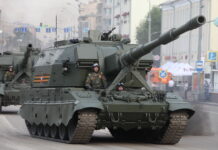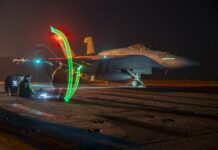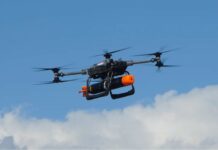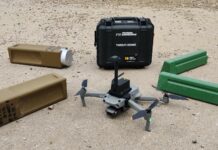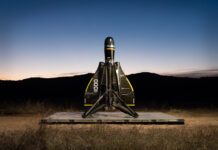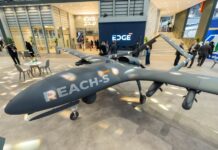Over the past six months, the War in Ukraine has been reshaped due to both sides widely using various types of uncrewed aerial vehicles (UAVs). In 2022, Ukraine had the upper hand in this regard, but in 2023, Russia caught up, employing a variety of reconnaissance drones and disposable loitering munitions (often referred to as ‘kamikaze UAVs’). Now both warring parties have announced plans to ramp up their UAV output in the coming years.
This suggests that the use of first-person view (FPV) drones and reconnaissance UAVs at the tactical level has already changed warfare as we know it. FPV drones are cheaper than conventional 155 mm artillery shells, while still being capable of destroying equipment worth millions of dollars. Moreover, drones are highly accurate, and they can also film their strikes ensure they hit their mark, or a neighbouring drone can film the strike to confirm target defeat. Russia’s large-scale employment of drones was one of the reasons that Ukraine could not apply NATO-style tactics in its counteroffensive during the summer of 2023. The Ukrainians were no longer able to use large armoured groups for a quick breakthrough, since their survivability was reduced by the presence of drones. At the same time, in the context of ammunition shortages, in part due to delays in US assistance, drones have become an effective tool for Ukraine to creatively deter Russian offensive efforts. Drones have now become an important factor that commanders take into account when planning infantry or armoured assaults. In fact, drones allow their users to effectively detect the movement of even small assault groups, at which point loitering munitions often come into play. The sheer availability of UAVs has pushed commanders to put the burden of most assault efforts on the shoulders of the infantry, though even they often find themselves attacked by loitering munitions.
It should be kept in mind that drones are effectively disposable given the intensity of ongoing battles, and they are frequently downed. Consequently, large numbers of UAVs are required in order to have a significant impact on all sections of the front line. As such, numerous UAV production campaigns have been launched at the state level in both Ukraine and Russia.
In Ukraine, at the core of FPV drone production were volunteers who primarily used off-the-shelf components purchased from China. Gradually, the effort has become more coordinated, which involved setting up production lines for UAV components in Ukraine. At the same time, Ukraine established cooperation with international investors and manufacturers to this end. A year on, more than 200 Ukrainian firms are involved in UAV production. Now a coherent approach on the part of Ukraine’s government is required to both support private initiatives and increase output at the national level. President Volodymyr Zelenskyy set an ambitious goal for Ukraine to produce 1 million drones in 2024, and also ordered the creation of a separate armed forces branch, the Unmanned Systems Forces.
Once the front lines become even more saturated with drones, the survival rate for both manpower and equipment is expected to decrease further. Footage on social media has shown various Russian weapon systems being hit at relatively longer distances than usual beyond the line of contact. Recent examples include the TOS-1A Solntsepyok thermobaric rocket artillery system and a launch vehicle from the Tor family air defence system. So far, the leap in FPV development has been so rapid that the warring parties are yet to deal with delivering enough quality anti-drone systems to the battlefield.
The surge in the development and upgrade of unmanned systems in both Ukraine and Russia was dictated by ongoing combat operations; since other nations have not faced similar conditions, the range and quantities of drones produced is generally much smaller. However, Europe and the US are starting to catch up in this regard.
The next step in UAV development, which we may witness sooner than expected, is the extensive application of artificial intelligence. The UK, along with the US and other governments, has expressed interest in sending Ukraine thousands of swarming-capable AI-driven UAVs that could coordinate with each other and attack Russian targets simultaneously. Potentially, the use of autonomous drone swarms would pose an even greater threat to Russian Forces, though the Kremlin has also taken up the development of such systems. It is important to note that UAVs are not seen as a panacea, nor as a replacement for aviation and artillery. However, they are a very useful combat element, and amid shortages of many other weapons systems, drones have significantly contributed to maintaining Ukraine’s defensive capabilities.
Alex Horobets






